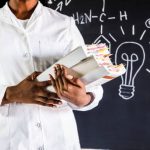Agricultural work has been done in India since ancient times, due to which our nation is called a farming-centric country. Agriculture has even played an important role in strengthening the economy of India. Moreover, it is very difficult to confirm when and how agriculture started in India authentically. However, agriculture in India is not only a means of livelihood for the people but also a cultural and historical heritage.
What Are Crops And The Role Of Agriculture In India
We all know that any living being on earth requires food under the essential requirements for survival. Although in ancient times, man did not learn about agriculture, he used to get food from self-grown plants and trees to meet his food requirements. Gradually, the population started increasing, and human civilization developed. As a result, humans began agriculture to meet their food requirements.
With the passage of time, the population started increasing with the development of the human mind. Due to this, man’s food requirements started increasing to fulfil this need. Therefore, humans focused on growing different types of crops according to a definite time-bound program. Thus, crops are the trees and plants humans produce according to a plan to meet their food requirements. In other words, that group of plants in a large area grown for food supply and economic benefit is called a crop.
Types Of Crops For Agriculture In India
- Kharif Crop
Kharif crops are grown in the country in the monsoon season, i.e. in the months of June and July. Another name for these crops are rainy-season crops. For the crops grown in the Kharif season, we need moisture in the air and normal temperature at the time of sowing. On the other hand, for the crop to ripen well, the temperature needs more sunlight. Moreover, farmers prefer a Kubota B series tractor for Kharif agriculture in India. Kharif crops include paddy, maize, millet, groundnut, urad, moong, groundnut, jute etc.
- Rabi Crop
Rabi crops are mainly grown in the winter, i.e. October and November. This is because Rabi crops require low temperatures as well as less water to grow, while crops need more heat and light to ripen. Therefore, we mainly sow Rabi crops only after the month of October. Moreover, rabi crops include Lentils, Mustard, Gram, Peas, Mustard, Barley, Potato, Tobacco, Sugarcane, and Sugar beet.
- Zaid Crop
The crops which are produced during the time between the Kharif crop and Rabi crop are called Zaid crops. Moreover, the crops sown in this season take very little time to ripen. Therefore, we mainly produce Zaid crops between the months of March to June. It includes crops like Cucumber, Cucumber, Watermelon, Tomato etc.
Classification Of Crops
Crops are produced in India on the basis of season, need and economic importance, botanical similarities and life cycle, according to which crops are classified, which are as follows-
- Depending on the climatic conditions.
- On the basis of use and economic importance.
- Classification of crops on the basis of the life cycle.
- Botanical classification of crops.
- Classification of crops on the basis of specific use.
- Agronomic classification of crops.
- On the basis of industrial use.
Crops Based On Life Cycle
At present, farmers grow many species of crops according to the life cycle. The life span of some of these crops is short, while the life span of plants of some crops is long. On the basis of this period taken in the life span of the plants, the crops have been divided into different classes, which are as follows-
- Annual Crops
- Biennial Crops
- Perennial Crops
Steps For Agriculture In India
Farmers do various agricultural activities in the field for the good production of any crop, from sowing to harvesting. The main principles that determine these actions are as follows-
- Selection of Crop
- Selection of land
- Weather Science
- Suitable Crop Rotation
- Mixed Cropping
- Irrigation Management
- Availability of Farm Laborers
- Management of Agri Resources
Importance Of Crop Rotation
Due to the continuous production of the same crop on the land, the production capacity of the farm decreases along with the yield of the crop. Along with this, different types of toxic properties are generated in the ground. Therefore, to maintain balance in the physical and biological condition of the land, according to the crop cycle, it is beneficial to produce crops by tractor. By using crop rotation, you can get high quality as well as high volume production using any Solis E Series tractor. Due to this, the production and fertilizer capacity of the farm remains balanced.
Benefits from Crop Rotation
- The soil properties, which include biological, chemical and physical properties, can be improved by adopting crop rotation.
- According to the crop cycle, farming increases the amount of organic matter in the land.
- Crop rotation is very important in increasing the field’s fertiliser capacity.
- The adoption of intensive crop rotation reduces weeds and increases the amount of organic matter in the field.
- The water-absorbing capacity of agricultural land increases, due to which toxic substances do not collect in the soil.
- Adopting the crop cycle process allows different types of diseases and pests that thrive in the soil to be controlled.
- The biggest advantage of crop rotation is that it improves the soil structure.
- No more irrigation is required in the field.
Stay connected with us for more details about crop production in India.




